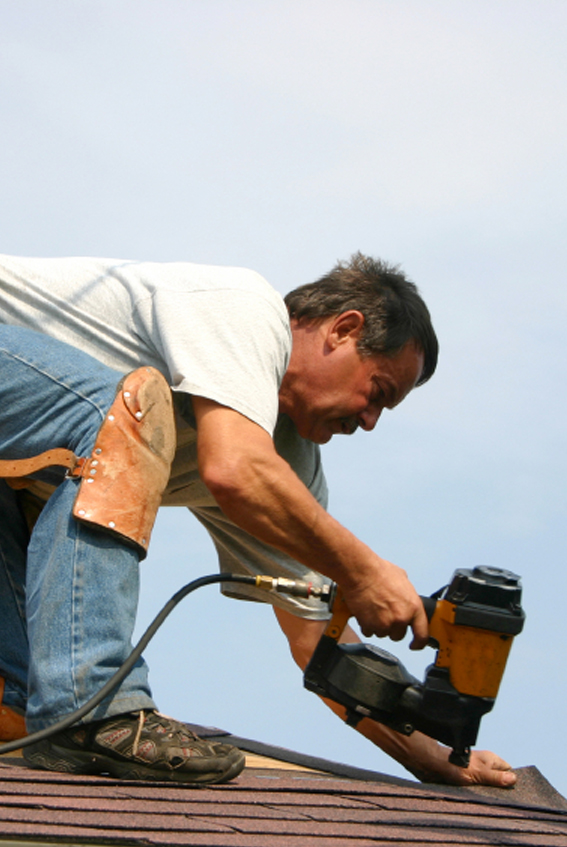Roofers and Mesothelioma
Asbestos in Roof Material Causes Mesothelioma in Roofers
Asbestos exposure goes with the territory when you work as a roofer.
And, because you work around asbestos, you run a solid risk of developing the cancer mesothelioma.
Roofing and other construction materials made between the 1900s and 1990s usually had asbestos added to them. These included:
- Sealants
- Asphalt felt
- Asphalt or cement shingles
- Flashing
- Underlayment
Asbestos products were once extremely common in roofing.
Not until the government branded asbestos products a hazard and began cracking down on their use did the roofing industry turn to safer substitutes. The move away from asbestos started in the 1980s.
Asbestos shingles are made up of a blend of that mineral plus Portland cement and asphalt. Depending on the manufacturer and model, the asbestos content can range from a small amount to as much as one-third of the shingle.
Shingles, underlayment and flashing are not the only sources of asbestos exposure when you’re working a job.
Pull off a roof and you’ll then often find an attic bursting with asbestos insulation and other asbestos-containing materials.
Why Asbestos Is a Problem

Depending on the condition of the material, mere hand pressure can be enough. What then happens is very tiny fibers of asbestos come loose and get into the air.
The closer you are to the release, the greater the chances you’ll inhale some of the asbestos.
That’s when the danger really begins.
The fibers of asbestos find their way inside your lungs. For them, it’s a one-way trip. They go in but do not exit.
Twenty years goes by. Maybe 30, 40 or more. That entire time, the asbestos inside you is working hard to transform the healthy cells lining your lungs into tumor masses.
Mesothelioma is cancer, one of the most aggressive known to medical science.
Asbestos Safety on the Minds of Many
Roofer asbestos safety is a big concern for government, labor unions and trade groups.
The collective-bargaining group that represents roofers is the 22,000 members-strong United Union of Roofers, Waterproofers and Allied Workers. This union offers training in asbestos safety and abatement.
Meanwhile, one state’s Department of Health — Minnesota — offers the following advice if you work with asbestos roofing materials.
When starting your work:
- Lay drop cloths — the plastic kind — on the ground below to catch roofing material you remove or excess you plan to discard.
- Wear disposable coveralls.
- Wear a respirator capable of accepting a P100 cartridge filter; dust masks are inadequate.
When working on the roof:
- Wet down the roof materials before you begin working with them and keep them wet until you stop.
- Try not to break the material unnecessarily.
- Don’t toss scraps or removed material down to the ground. Lower them in a container.
- Put scraps and removed material inside leak-tight bags, drums or 6-mil polyethylene sheeting after they are lowered to the ground.
After finishing your work:
- Avoid walking inside the structure immediately after you’ve been on the roof so you don’t track asbestos across the floor when you enter. Wash your shoes first.
- Wash your tools after each use.
- Wash your hair, face and body thoroughly at the end of the workday — preferably before you leave the job site.
- Put on clean clothes.
